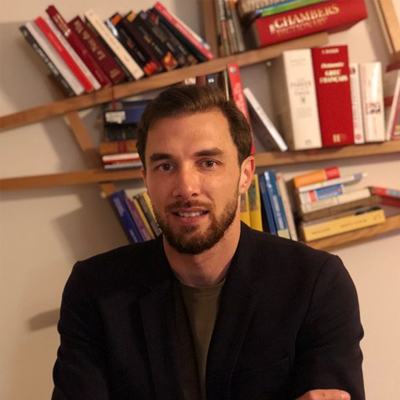| In the last three years that the blog has been running we have heard from various innovative areas in TDM and clinical toxicology, but not yet about pharmacogenomics. This month Nicolas Picard shares about his experience and how it impacts variability in our core areas. We also hear about his vision for the future of clinical implementation and the emerging role of epigenetics.
Nicolas Picard Professor, University of Limoges Clinical Practitioner, Limoges University Hospital Limoges, France |
My days are never the same because I have very different functions. I am in charge of a teaching department at the Faculty of Pharmacy. I teach pharmacology. I am also very involved in setting up new digital learning methods for students in health sciences (pharmacy, medicine, etc.). At the hospital, I am responsible for the activity of pharmacogenetics. This includes technical supervision, biological validation of the results, communication with clinicians, etc. I am also involved in TDM activities. Finally, I have a research activity in pharmacogenomics in the field of transplantation. My days are often divided between these 3 activities.
Our hospital department has the strength to be multi-professional. It brings together biologists, clinical pharmacologists, toxicologists, physicians and pharmacists. The staff is involved in training students in both medicine and pharmacy, which allows us to promote TDM very easily. We are also one of the rare departments of pharmacology-toxicology to host a pharmacovigilance center. I find this way of working very innovative!
I started my activity of pharmacogenetics with techniques in molecular biology, which are now considered to be very basic such as real-time PCR (In 2000, it was quite innovative!). Today, with “Next Generation Sequencing” (NGS) methods, the perfectives offered in pharmacogenetics are exceptional! The concept behind NGS is not that revolutionary: the bases of a small fragment of DNA are sequentially identified from signals emitted when a DNA fragment is re-synthetized from a template strand. This is the concept of “sequencing-by-synthesis”. The signal can be either optical or electrochemical. The revolution is that NGS systems perform millions of reactions in a massively parallel fashion, which enables rapid sequencing of large stretches of DNA base pairs spanning a large region of the genome. The sequencing can be targeted to the whole genome, exome or to very large gene panels and the sequencing of DNA from multiple individuals can be performed at the same time thanks to the insertion of short (barcode) DNA sequences in each template. One might wonder if this type of broad genome sequencing can actually have an interest for pharmacogenetics. It clearly does! With this technology, preemptive pharmacogenetics testing can be envisaged much easily.
I began my research by studying drug metabolism pathways and drug-drug interactions. I was working at that time using in vitro models and mass spectrometry approaches. As genetics became available in our department, I became interested in working on the genetic variability of drug metabolism, with both in vitro and clinical approaches. This is thus research activity that gradually brought me to TDM activities including pharmacogenetics.
Some European and US centers have put in place a very advanced preemptive pharmacogenetics strategy. A test concerning a panel of pharmacogenes is performed at the hospitalization of the patient, and the results are made available to medical doctors and clinical pharmacists trough the prescription software. Even if the MD did not ask for pharmacogenetics testing, he or she is informed of a particular risk. This is not done in France at the moment. I hope that our center will be able to trial such an approach soon.
Research has shown that genetic variability accounts for a limited part of the differences in therapeutic responses that can be observed following administration of a single dose of drug to two separate individuals. These genetic changes (which are stable) cannot predict the intra-individual variability (the evolution of drug efficacy or toxicity with time). In contrast, epigenetic changes are dynamic and reversible. They influence gene expression without inducing any change in the DNA. Several recent studies suggest that these changes play a major role in regulating the expression of pharmacogenes (CYP, membrane transporters, etc.). We have initiated research on epigenetic biomarkers. I cannot say that it will result in clinical application but it seems worth working in that direction.
I think the future of TDM will be very related to digital technologies! We all have access to smartphone or connected devices. All of us can easily monitor and analyze bodyweight, blood pressure, etc. With micro sampling strategies, I think that “digital biology” and “digital TDM” are on the way! We have to prepare ourselves for that new paradigm.
